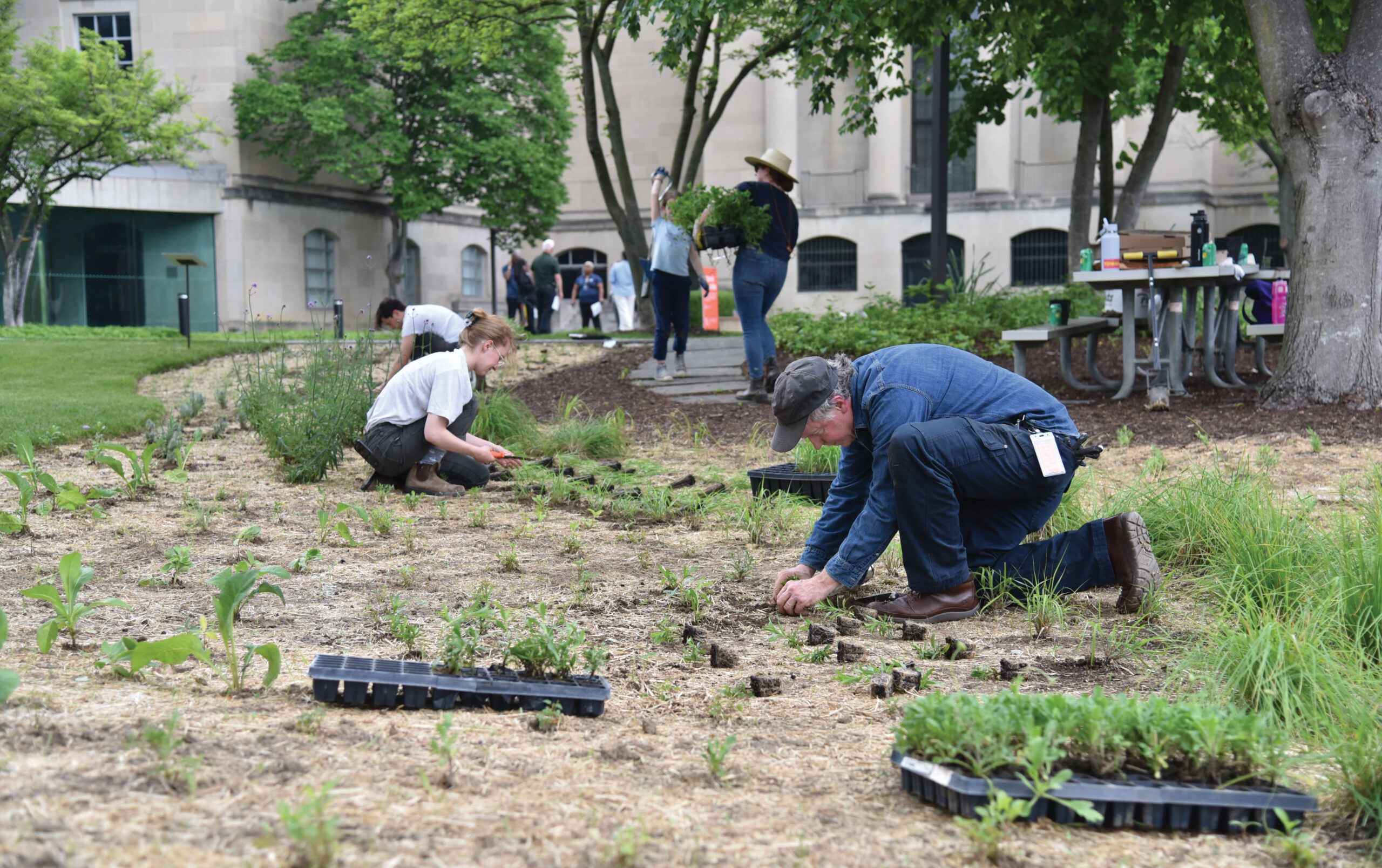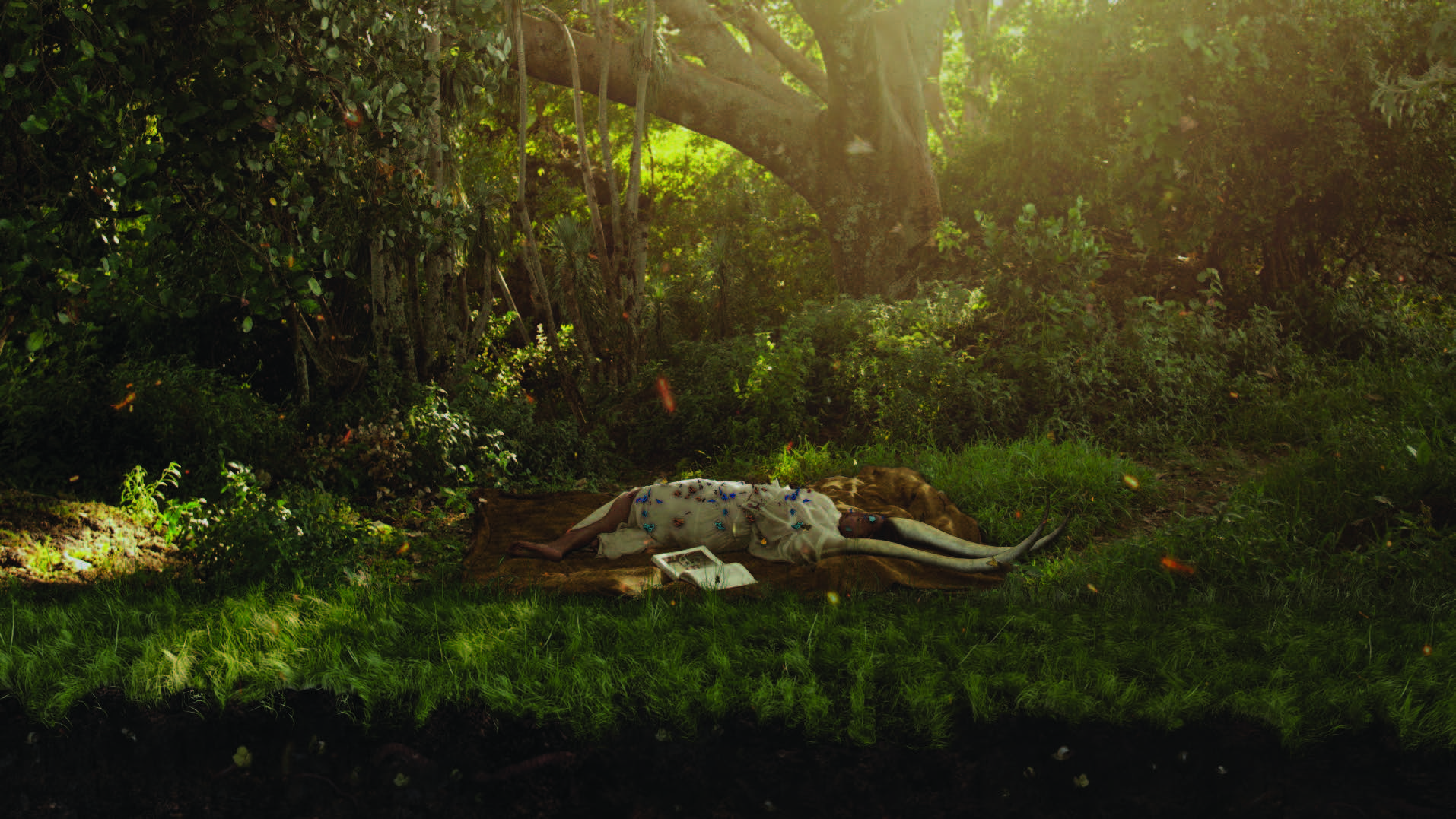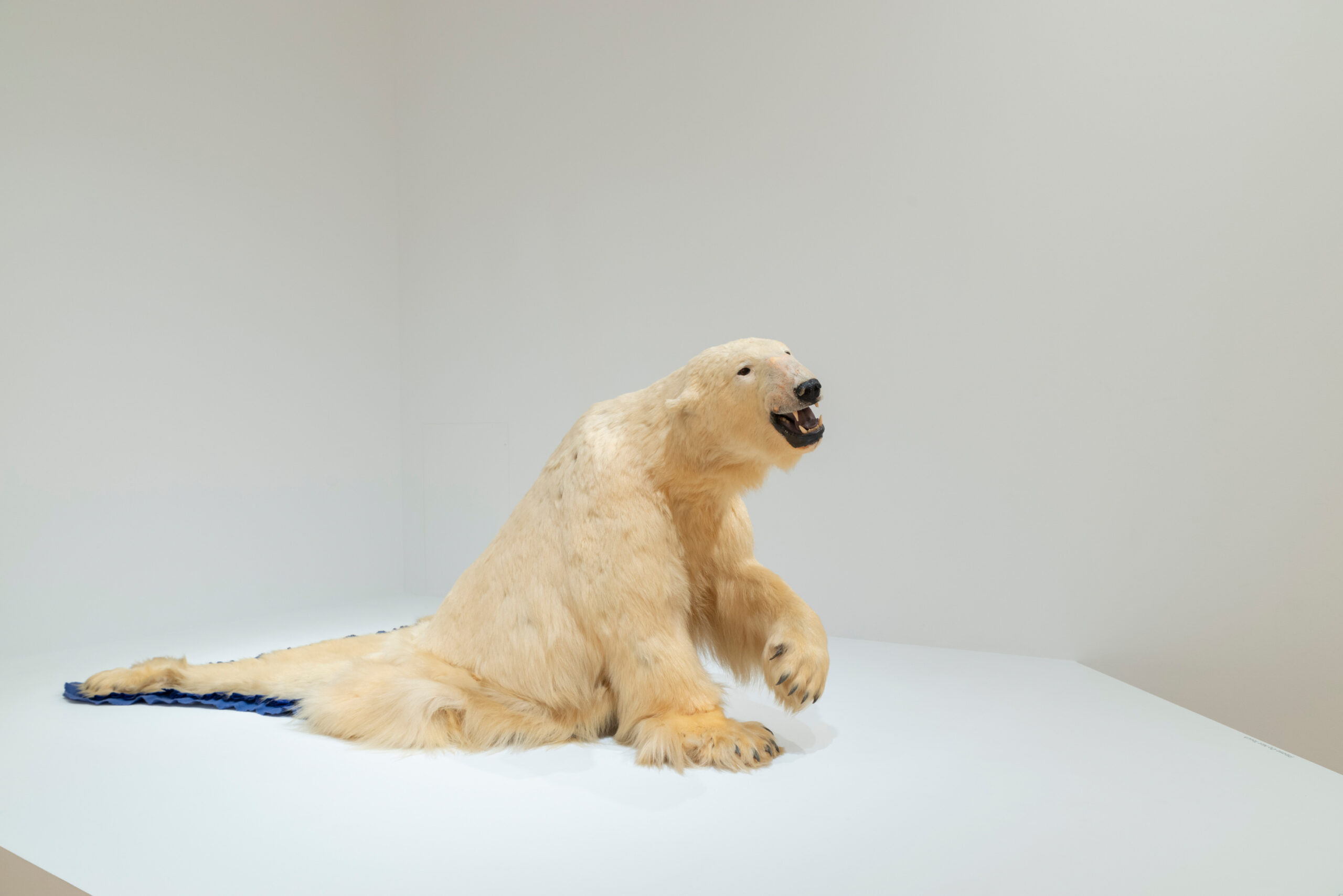
How do life, breath, joy, and pain manifest in black experience from cradle to grave? How are health and wellness nurtured?
Elissa Blount Moorhead and Bradford Young’s Back and Song
In February 2020, Blount Moorhead and Young connected with their friend and frequent collaborator, filmmaker and cinematographer Arthur Jafa, to speak in-depth about Back and Song via video chat for the first time together. Part 1 of their conversation, published on February 28, 2020, is below. Part 2 was published on November 10, 2020. Part 3 will be published in December 2020.
Part 1 of 3
Arthur Jafa: Okay but hold up, what are we talking about?
[laughter]
Elissa Blount Moorhead: And that concludes the interview.
Bradford Young: And that concludes it. Boom there it is. Hey, take that BMA.
EBM: You’re supposed to interview us about Back and Song, AJ.
AJ: Oh my God. I’m supposed to be the interviewer? I’m so used to just going and being like, “Okay, what are we talking about?” Oh my God, I’m so underprepared. Jesus Christ.
EBM: Heavy, right?
AJ: Well, I saw it in Philly. Yeah, I got a question. The fundamental question it seems to me is, to what degree is it a conscious intention on you guys’ parts and where is your thinking collectively and individually regarding this whole question of the therapeutic value of film? To what degree is it a film about healthfulness and therapy in the black community and to what degree is it about a certain intention to make a film where the viewing of the film or the experiencing of the film or the projection or the installation is therapeutic in itself?
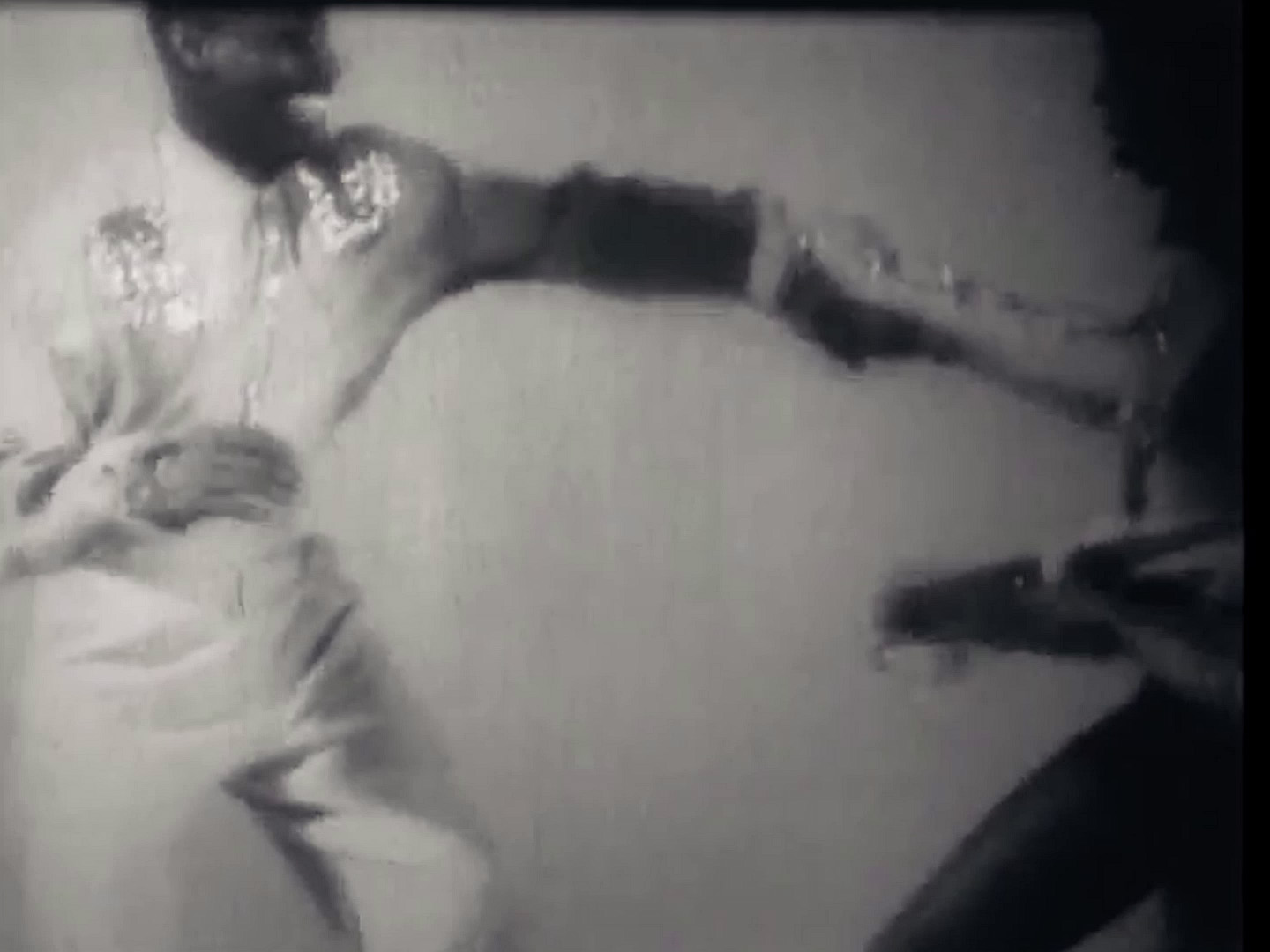
EBM: I would say the latter. I think it’s the latter. That it’s an object of … It’s like an apparatus, as opposed to … I don’t think of it as
BY: Nah, I don’t see it as
EBM: There is some intention there though, Brad, because it’s a mediated experience, that we’re trying to re-present in a specific way. Right?
BY: Well I think everything, up to the actual feedback, I’m very confident that what we did what we’ve been saying, which is that we turned away from the disparity to say that we have control. We have control over all of this, and I think that even includes how we present it. And our conclusions about how presentation can be part of the healing process. I think the gathering of the material, it’s assertive in the sense that it’s not about the disparity directly or visually, but it’s about the rituals that are well-documented and well-curated and well-presented. You know what I mean? Well-presented…and that are beyond what we could even gather. It’s so much, we do so much, in response to the disparity.
AJ: Well, what’s the mechanism? To me this is the question, this is the fundamental question of all cinema, not cinema that just is essentially about blackness and well-being. The question is this: would the opposite, or the inverse, of cinema that sort of diminishes us psychically, spiritually, and emotionally be a cinema that bolsters those things? You know what I mean? Or informs or catalyzes those things. Self-sufficiency, well-being, mutual aid, all these kinds of notions. So when I saw it, I stepped in.
There is a tradition, there is a history of black filmmakers. The one person I would point to would be Ben Caldwell. Particularly, in his little short film, The Nubian, which when I remember Ben showing it to me the first time, I saw it on the wall of his apartment in like ‘81 or something like that. But it’s on a short list of the most memorable projected experiences I ever had to see in somebody’s bedroom, because he was talking about trying to make the leap from a film about a healer, to a film that actually functioned to heal. So there were things like just color fields. You know what I mean? You’d have a character and all of a sudden there’d just be red on the screen, vibrating in a certain kind of way.
And when I saw the piece, that was the first thing that it seemed to take on. Because obviously it’s not a split between the two, it’s not representing healing versus being healed. It’s not an either/or proposition. But I think probably we’d all agree that the latter is the part that feels like, if we could achieve it, the most useful, the most magical or something like that. You know?
BY: Yeah.
EBM: Yeah. It was so interesting because the last couple of days I’ve been in all these VR/AR conversations and the big conversation is about immersion and experiential, whatever, mechanisms. On Thursday, Brad did a talk, and we were talking about this idea of technology being separate from an immersive experience, you know? It’s just been on my mind lately because I’m not sure you can have so much mediation, like an apparatus that you put on your eyes or whatever, and then still have an immersive experience because you’re necessarily disjointed. So maybe that’s also the case in two dimensions.
I’m not sure, but I think the goal, or the intention at least, particularly when we were looking at the material for Back and Song before it was put together, the intention was something akin to re-putting back together, re-membering and putting those atoms back together in one place. I think intention wise, there’s definitely…there’s an immersive intention. Yeah. But…I don’t know if we could achieve that.
… it’s about things that we don’t have fears around. We trust midwifery, we trust dance, we trust music. We trust frequencies of sound that are healing.
AJ: But another question I would ask you about that is: to what degree do you guys think intent is felt by the viewer, and what things dictate the degree to which it’s felt? For example, some people say showing black beauty is in itself therapeutic and you feel it, regardless. You know what I mean? You feel it. But I’m wondering, did you guys think about or discuss…or what’s your thinking about it having done the project now, about this whole question. How does it work? How do you imagine it working?
BY: I mean, it’s an art. We’re aggregating, you know what I mean? We’re aggregating from a premise, you know what I mean? We’re aggregating from a hypothesis about what matters to black people, and what feels good. And what is interesting about this piece is that the origin of it is very medical. But the gathering of the imagery was anti-medical. It’s not in conversation with that. It’s working from a different spirit. Which makes the whole process less assured in one way, but very assured in another way, in a sense that it’s really two artists reflecting on what really works for us.
AJ: What do you mean?
BY: I mean it’s about things that we don’t have fears around. We trust midwifery, we trust dance, we trust
EBM: Ritual.
BY: Right, even rituals that we’ve never experienced, we trust them.
EBM: Brad, I was also thinking when you were talking about aggregating – so the process, AJ, was first in the hands of Brad. And then, through sharing and communal intention, to me and Brad. And then the group in London [Archivists Elijah Maja of Future Together Lab, Rianna Jade Parker, and Hudda Khaireh] that was finding material after being in deep conversation about what matters to all of us. And it happens to have been all things that matter to all of us. And maybe central in that was something about transcendence, right? And so then from that, back to me and Brad, then back to Stefani [Saintonge], who was editing, and then back to Esperanza [Spalding], to the music.
And we kept thinking—I know I was thinking, and we probably talked about it too—about your theory around how energy is passed, and not these Western ideas of delegation, and more about energy passing and growing in a particular kind of formation. So that to me, I felt like that was felt, just from what we were expressing afterwards. Particularly once I could see Esperanza riff on it, way after all those back and forths.
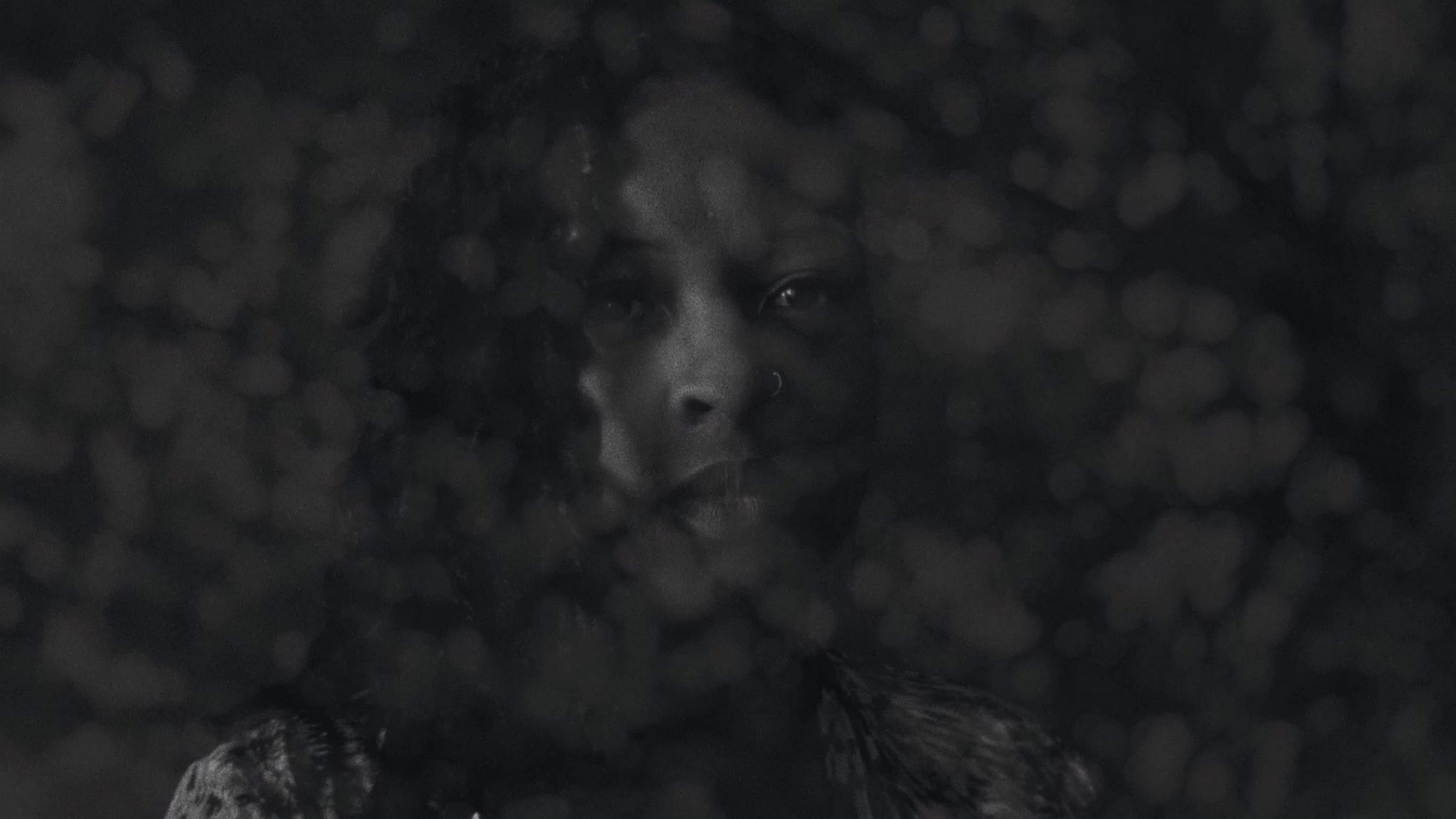
I don’t know, I think that was felt, because people were saying things about, for example, the way the two channels were interacting with each other and how having an oblique view of what, they kept saying, were people that were watching over them. They weren’t thinking about it as this two dimensional, captured, mediated experience. They were talking about the screens as if these were people taking care of them in the moment.
BY: In the moment, right. Yeah. I think that’s what I was trying to come around to, which is what’s different about making, what was different for me and I know Elissa and I felt it both. What was different for me was that I was using a different set of faculties, in the sense of what makes me feel something when we were aggregating versus when I’m a cinematographer on set and what makes me feel something.
AJ: Well break that down. Talk about that a little more specifically. First of all, just let me know specifically what you mean when you say aggregate.
BY: Well I mean gathering.
AJ: Gathering?
BY: Gathering. In the sense of gathering images from multiple sources. We actually partnered with folks that gathered, and that was the first iteration, and then we edited and filtered with Stef.
EBM: And some of that gathering was not motion picture. Some of that gathering involved sharing things we’d read. And practices. And discussion. Some of it is not literally gathering the footage. There was a lot of back and forth and understanding around how to pinpoint material as relevant. Because there was a lot of theory. Then something happened. It was like remixing, in real time, our knowledge of what we thought made sense. We didn’t have a lot of…we gave frameworks, but that basketball analogy that you use about passing the energy – that’s exactly what I felt like we were experiencing, Brad, right?

BY: Yeah. Yeah. And I think, too, that aggregating and also the aggregate, in the sense of what’s cohesive about it, I think what was cohesive about it wasn’t necessarily that the images, for instance, were just pulling from a space and just pulling images. It wasn’t pulling images that necessarily had a visual or a certain kind of redundancy to it per se, like visual redundancy to it, that would be more familiar if I was making a movie. You know what I mean? This was more about what you would call the social harmonics, which is basically the aggregate underneath, and we gather that. And then it was a whole other process of surrendering it to Stef, really, and letting her editorialize that to put them in conversation.
AJ: Right.
EBM: Brad, I think, has got a lot of mastery around it. That particular kind of collaboration is more like, say,
BY: It was horizontal and lateral.
AJ: When I sat in front of it I definitely, one of the things I can just say as a viewer, one of the things that seemed very, almost transparent to me was that you guys had definitely figured out a way to create a kind of complex. You had created a conceptional field. So I guess, it actually felt like the tip of iceberg. You know what I mean? An iceberg most of the mass is actually under water. You don’t even see it. All you get to see at the end of the day is what tips up, and when we think of iceberg we think of that peak, you know what I mean? That peak is just the smaller part of the overall thing. I definitely sense that I was in the presence of something where, for lack of a better term, the hermeneutics—meaning all the thinking around it and all the internal logic of it—was right below the surface of what I was actually seeing.
BY: Right.
AJ: There were all these ghost resonances. They weren’t things I was seeing, it was things in the gap of what I was seeing, or ghosting what I was seeing. I was, sort of, left with this big conceptual question mark. Because, I didn’t know anything about how you guys had arrived at it. I didn’t know whether it was linear or horizontal or vertical or script or storable. You know, I didn’t really know. I just remember looking at it moving around in space and being like…It had a slightly refracted quality to me, particularly as it was installed. You know?
EBM: Mmhmm.
BY: Yeah. Yeah. Yeah.
AJ: So I was wondering about that relationship to intent…
BY: Well, I will say this, that it’s very freeing to not have to think about it as the end all, for me.
AJ: Yeah.
BY: It’s very freeing for it to be … Though I feel it’s highly organized and very meticulously conceptualized in the sense of where we put screens, how you interacted with sound and obviously in a very perfect way because of that space. I also think that we probably could have used another two months to gather material and give Stef another two months to cut. Right, mama?
EBM: Yo.
BY: We needed more. You know what I mean? But at the same time…
EBM: And we wanted to do more elements outside of the screens…
BY: Right. But it was very freeing to leave it fractured. You know what I mean?
AJ: Mm-hmm.
BY: To leave it as just the beginning of a conversation of—what I really appreciate your question is—how do we get to cinema as real healing, real euphoria? Not that I walked out the film and I felt good for a hot day, but really I reached something. I reached a higher height, you know?
AJ: Right.
I think what’s happening is ultimately you seeing two artists in this piece, but two artists that embodied a whole collective consciousness, a whole community. A whole collective consciousness that’s literally ready to put down all the other stuff to explore this idea of cinema as real healing.
EBM: Exactly.
BY: And that cinema is… You want to get to that point where, even in Islam, gathering somebody’s images is finally seen as the frontier of healing. You know what I mean?
AJ: Mm-hmm.
BY: It plays in. But I think we’re scratching at the surfaces. I think what’s happening is ultimately you seeing two artists in this piece, but two artists that embodied a whole collective consciousness, a whole community. A whole collective consciousness that’s literally ready to put down all the other stuff to explore this idea of cinema as real healing. Like real cell generative, regenerative work. You know?
AJ: Right.
BY: It’s like people jumping out of planes and being cured of cancer because of all the adrenaline rush.
AJ: Right. Right.
BY:
EBM: But it’s also interesting. I was watching BLKNWS at Sundance with Kahlil [Joseph],
AJ: It’s not so much that I wanted to get under, it’s just that I sensed it. You know in that same way you talk to an older person and they tell you something, they may say something that’s vaguely cryptic, but it’s bolstered by a whole…the sort of collective resonance of their experiences even if you don’t know what those are, you still feel it. You kind of seem to feel it. And I guess that’s all I was trying to say with that.
Another thing I was thinking is this thing that kind of came up when I was watching it. It’s one of my favorite things of the last few years that somebody said, I think it was at this thing that Sharif organized where, it was a brother, he said, black culture was “culture in a state of emergency.” And I’ve thought about that a lot. If you think of improvisation, it’s like that. You know what I mean? It’s not just doing something beautiful. It’s doing something beautiful in a sort of time-space context. It’s not like you can just contemplate about it forever. It’s like in the moment.
But increasingly, as I think about that statement, I think about this kind of shift that’s happening in my head when I think “in a state of emergency” means under threat, of course, or precarity. That’s what typically it would mean. But now I started to think about it in terms of things emerging, you know, in a constant state of things coming into being. Not just precarity, but things coming into being. And I guess when I was looking at you guys’ piece that kind of came to my mind. Well what is the relationship between this state of emergency that’s so typical of black life, and the very question of therapy or health or how our experiencing modes address that issue?
Just to get us to parse one example, how do we shift it from the question of cinema being healing-as-metaphor versus it’d be concretely healing? Like puts you in a state…pursuing an alpha state or something like that.
BY:
But for us everything that is presented, the images that are presented, are concrete ties, examples of black culture. They are the things that are tangible. They are the things that actually work. There’s no placebo. You know what I mean? And it’s alive. It’s growing, and I think it’s growing because it continues to be alive. As some folks would say, we haven’t found our ancestors’ herbs. We haven’t found the herbs that they used. We’re still in search of that. So I think it’s forever emerging because a lot of that stuff we haven’t excavated, it’s been lost…
EBM: And then also, not in spite of that in this case, that medical gaze, which is synonymous with the white male gaze. You know that when you look at that particular section of the midwife and the birth in particular. We dropped out the anthropological, oppressive narrative that was happening over that. And that’s that state of emergency, in real time. That film was made to obliterate a particular practice that has worked for us, ever since humans have been. We were trying to present that as something that, I think, is happening regardless, in real time, regardless of that attempt to …re-frame it.
AJ: You know, this question of emergency, it just popped in my head: re-emergency. That’s a strange term. You know what I mean?
EBM: Yeah.
AJ: It’s going two places at the same time. Re-emergency.
BY:
I’m just saying I think those are the questions that I think we would hope would come up. It’s like yes, we are bold enough to say, we are confident enough to say, based on these experiences, that you should not be taking those pills. And they have told you many times that most of it is a placebo, anyway. But this stuff right here, that your ancestors have been using for a thousand years, no placebo. The sense that, yeah, maybe it is actually. But we, maybe it’s not that word. That within the tradition there is that sense of placebo, I’m sure. Right? Homeopathic, all of that stuff, kind of plays into that. For us I think it’s critical to underline that fact, to remind ourselves. It’s like reminding ourselves that free independent black schools work. At the end of the day, that’s what works. It’s the same thing with this. At the end of the day, the things that we are proposing to you on the screen, this stuff works. And we are living proof of it. And everybody watching is living proof of it.
Elissa Blount Moorhead and Bradford Young: Back and Song is on view through January 3, 2021, at the BMA, as a part of the Museum’s 2020 Vision initiative.


